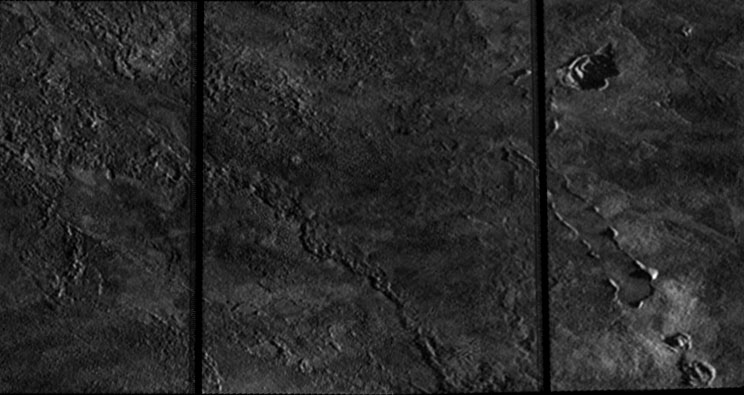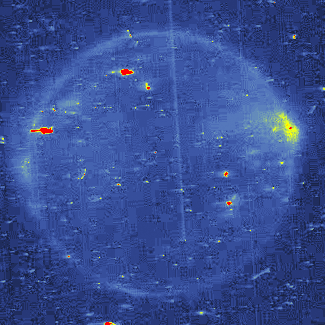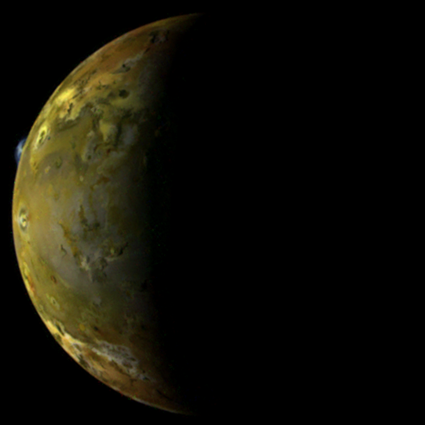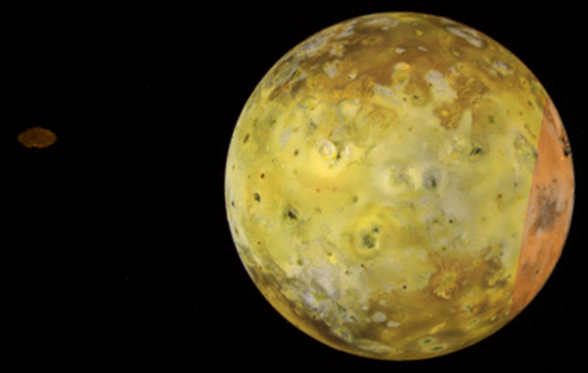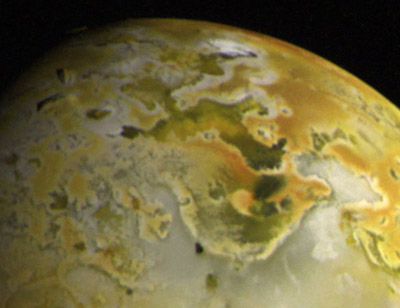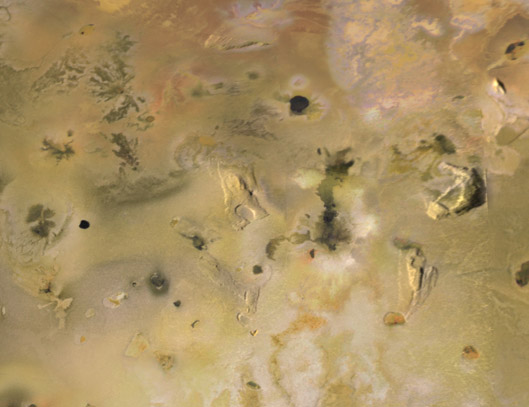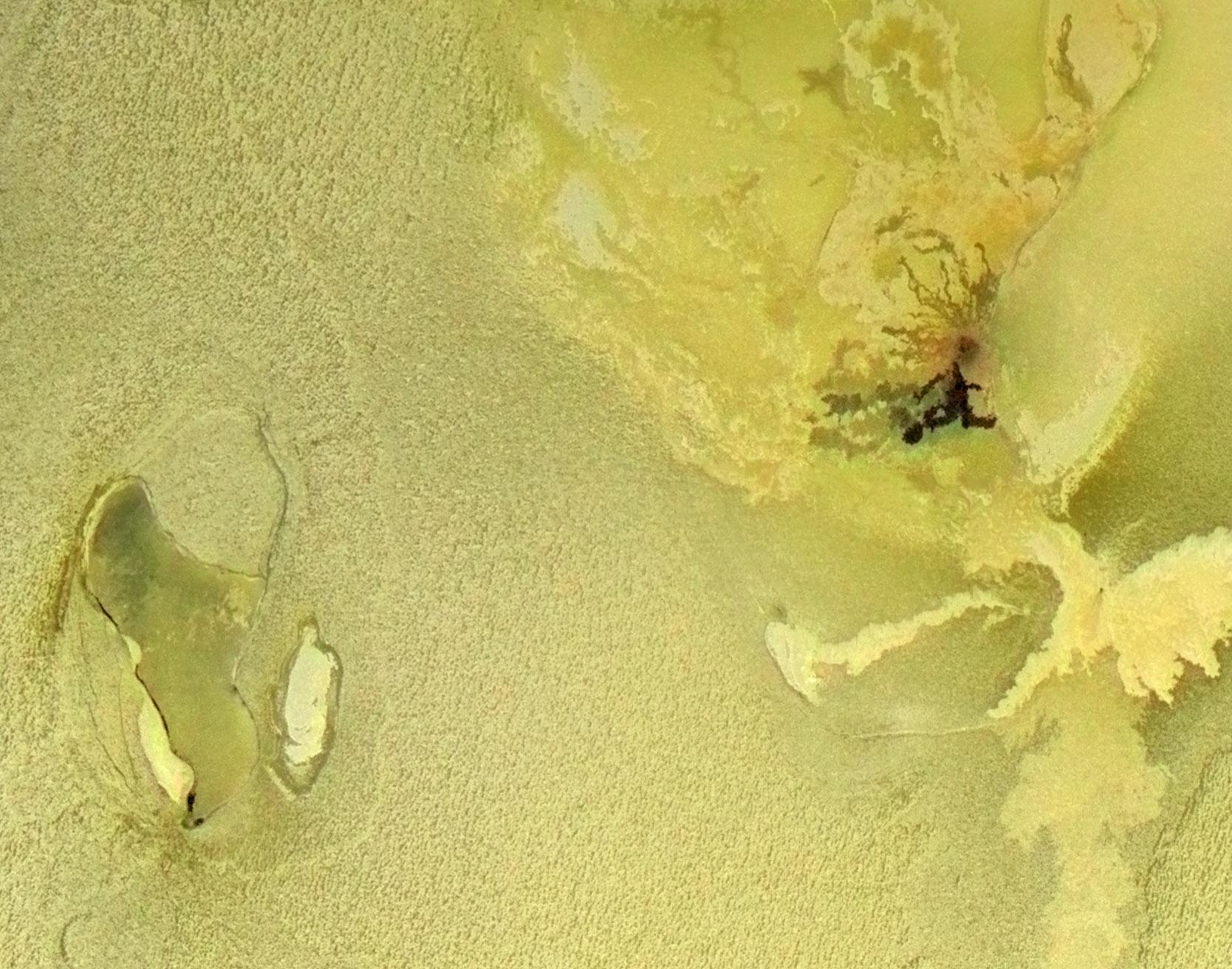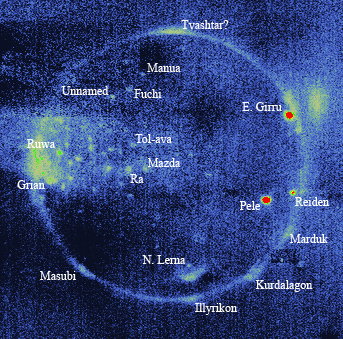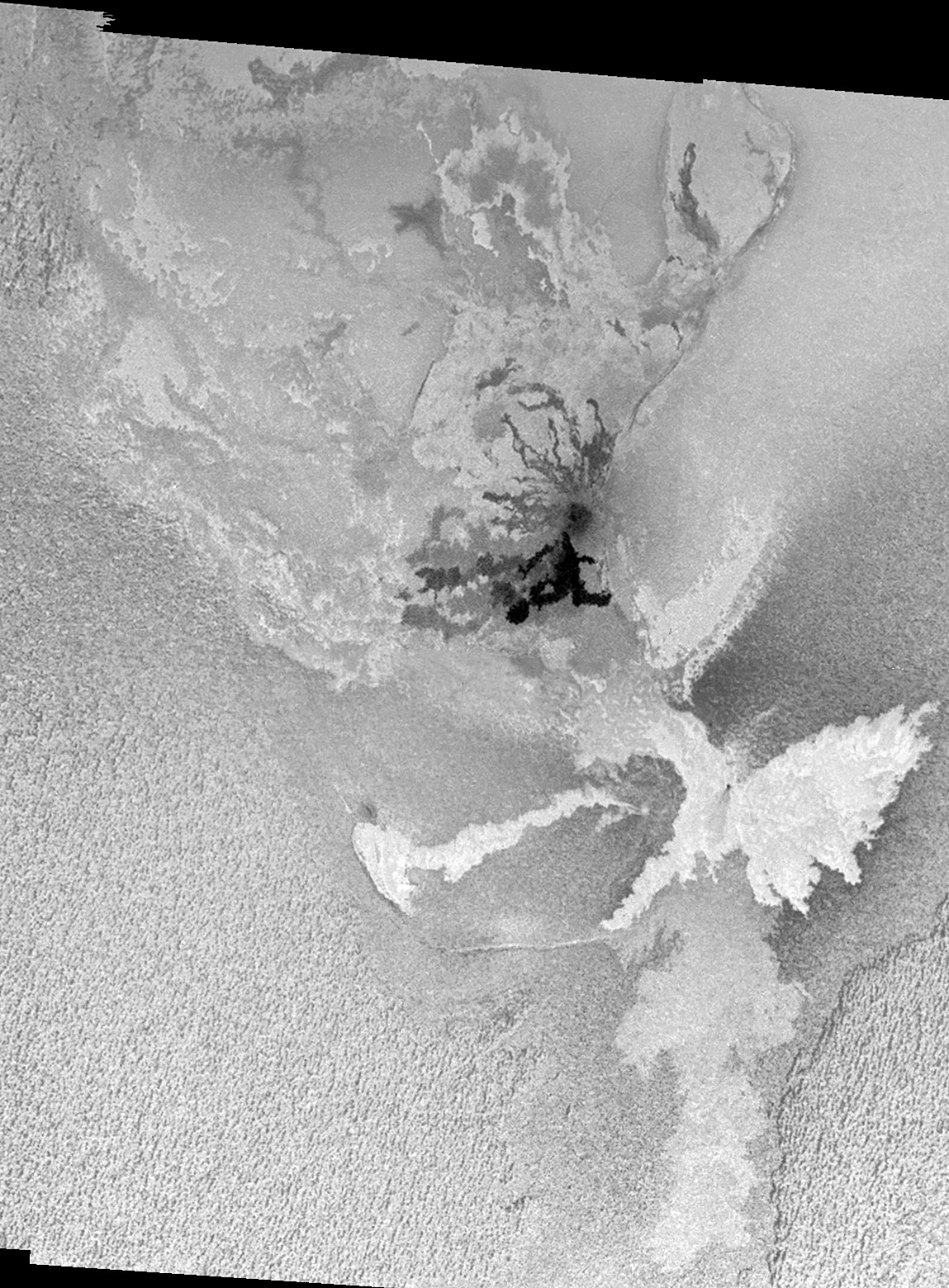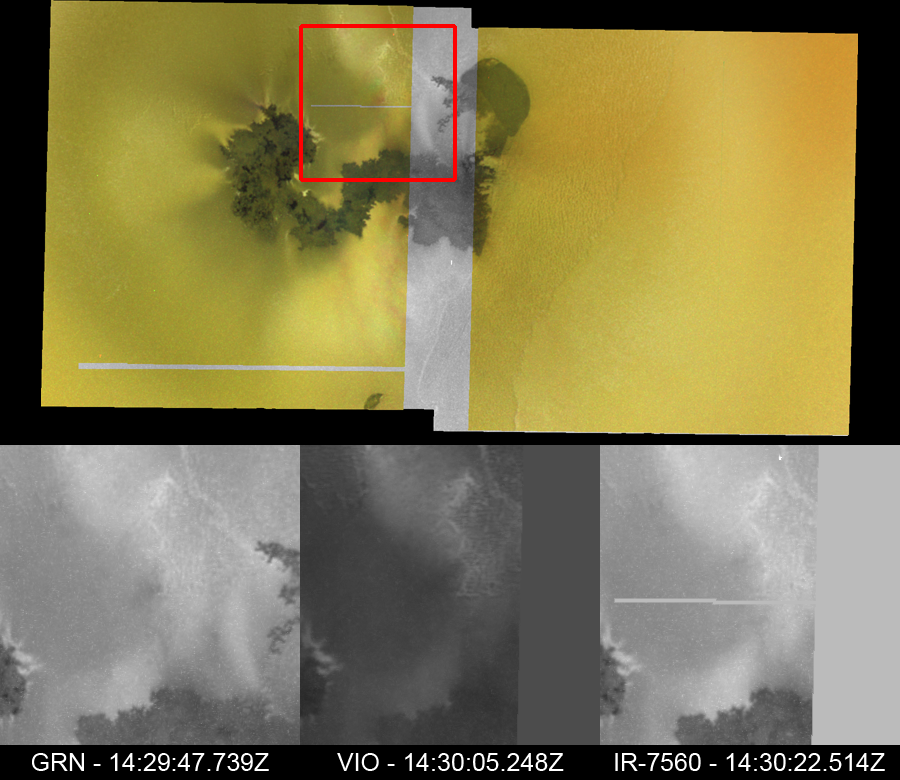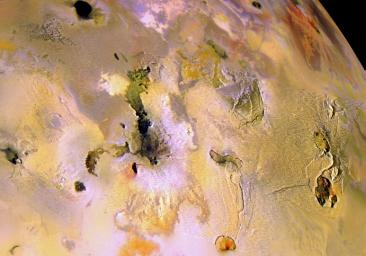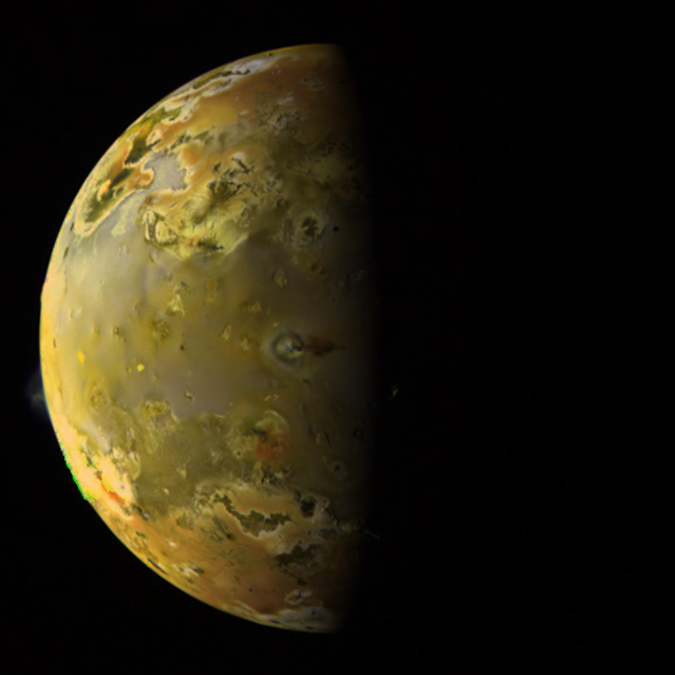The other Io-related paper in the April 2008 issue of the journal Icarus is titled, "
S2O, polysulfuroxide and sulfur polymer on Io’s surface?" and is written by Donia Baklouti, Bernard Schmitt, and Olivier Brissaud. Such research is important as the presence of condensed S
2O is one explanation for the reddish deposits near some volcanoes.
In this paper, the authors performed laboratory experiments on S
2O, a compound predicted to be among the gases expelled by volcanoes on Io but to date not observed. The authors synthesized the compound from gaseous SOCl
2, then allowed the product to condense on a target in temperature and pressure conditions expected on Io. This experiment was preformed several times, with different temperature conditions applied to the sample, and with some having pure S
2O in the initial gas and others with 2-10% S
2O in a matrix of SO
2, to match the expected gas composition at Io's volcanic vents. At various times, the authors then measured the visible and infrared spectra of the sample plate and compared their results to Galileo NIMS data of Io's surface.
In both gas samples, much of the S
2O disproportionated into sulfur and SO
2 before condensing on the sample plate. When the sample plate was at a temperature below 120K, the resulting condensation was often a mixture of SO
2, sulfur, and a small amount of S
2O. Above that temperature, SO
2 can not condense or sublimates when the sample plate is heated above that temperature, leaving behind the sulfur and S
2O. However, the S
2O does not stick around for long as it polymerizes, forming longer chains of polysulfuroxides until the molecules lose more and more of their oxygen and yellow sulfur polymers are formed as the temperature is raised more. These results suggest that on Ionian surfaces below 120K, the appearance of S
2O would be masked by the presence of SO
2, forming whitish deposits, and sulfur polymers, while above that temperature S
2O is converted into yellowish polysulfuroxides. These results further suggest that S
2O can not explain the reddish deposits seen at some volcanoes. This further supports the idea that these deposits are formed from the condensation of S
3 and S
4 that is directly vented from Io's interior.
The authors compared their visible and infrared spectra measurements to Galileo NIMS spectra of Io. The authors found that many S
2O absorption bands either occur on the wings of strong SO
2 bands, which dominate Io's infrared spectrum, or are too shallow or would occur over too small a surface area to be observed by NIMS. The NIMS spectra is better explained by a combination of SO
2, stable S
8, and sulfur polymers.
Link:
S2O, polysulfuroxide and sulfur polymer on Io’s surface? [dx.doi.org]









